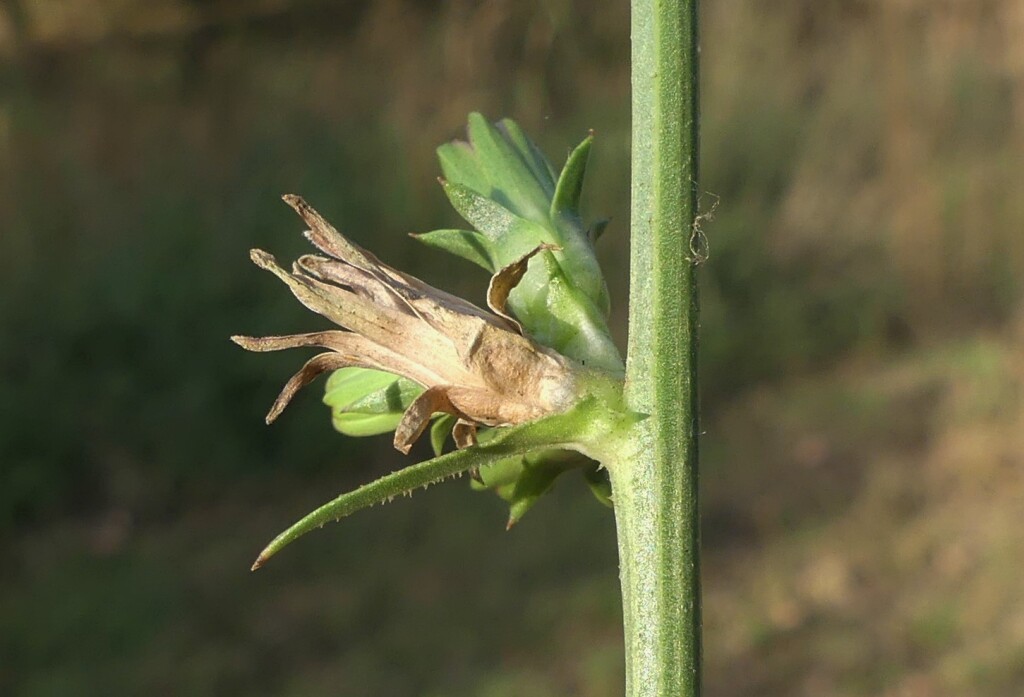Cichorium
Annual, biennial or perennial herbs; stems divaricately branched. Leaves basal and cauline, alternate; basal leaves rosetted, toothed to pinnatisect; cauline leaves smaller, remote, becoming reduced and stem-clasping toward inflorescence. Capitula in elongated, spike-like inflorescences, terminal and axillary, sessile or pedunculate; involucre c. cylindric, bracts in 2 series, unequal, erect, outer ones shorter, herbaceous, bases thickened and hardened; receptacle flat, naked, pitted. Florets ligulate, bisexual, fertile, blue or sometimes white or pink; ligule broad-linear, minutely 5-toothed; anthers tailed at base, with short obtuse appendages at apex; style bilobed, with linear, terete, pubescent branches. Cypselas obovoid, somewhat 3–5-angled, truncate, glabrous; pappus of 1 or 2 series of small or minute obtuse scarious scales.
About 9 species, from Europe, northern Africa and Asia; 2 species naturalised in Australia.
Cichorium endivia L. (Endive), an annual or biennial herb from Europe and Asia, grows to about 120 cm high, has toothed to deeply pinnatisect basal leaves, terminal and axillary capitula that are solitary or in clusters of 2–5, purplish florets and pale cypselas with pappus scales c. 1 mm long. It is commonly cultivated as a salad vegetable. A specimen at MEL, collected in 1889 near Swan Hill, may have been from a garden-escape, but there are no more recent collections to suggest it is naturalized in this State as it is in New South Wales.
Jeanes, J.A. (1999). Asteraceae. In: Walsh, N.G.; Entwisle, T.J., Flora of Victoria Vol. 4, Cornaceae to Asteraceae, pp. 652–666. Inkata Press, Melbourne.
 Spinning
Spinning



